6 Reading the Pattern Instruction Sheet
Sheri Deaton
Reading the Pattern Instruction Sheet
Read and Follow the Directions
Reading and following the pattern instruction sheet is key to a successful sewing experience. To reiterate this concept, let’s read that again.
Reading and following directions
are essential to your success in the apparel production laboratory.
If you want to save yourself time, effort, energy, and frustration read the pattern instruction sheet thoroughly, from the first step to the end of the project BEFORE you begin. Look at the pictures, note the symbols used and the seam allowances for the project. Use a highlighter or sticky notes to help you see the steps and remember the key ideas that you need to know. Just like a “stitch in time saves nine,” reading through the pattern instruction sheet before beginning a project’s production will save you from making multiple mistakes along the way.

TIP: Before you begin a clothing lab with students, expect them to read the pattern instruction sheet. Have them turn and talk with one shoulder partner or in table teams to explain the steps to one another. Check for understanding each day, each step along the way. If you are in the middle of a big project, ask students to list the first THREE steps they intend to work through today during class. Keeping students’ eyes on the directions and their minds on the goal at hand will produce a more meaningful laboratory experience. If you have students who are struggling with reading comprehension, consider pairing them with a stronger student in this area to allow for peer tutoring and scaffolding of understanding.
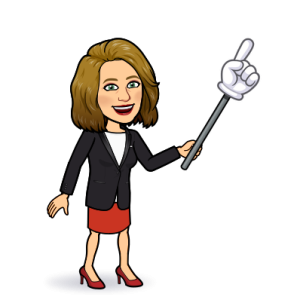
Instruction Sheet Information
Pattern instruction sheets will let you know how to cut out and construct your garment. If you follow the directions carefully, you can construct your project in a timely and efficient manner. Failing to follow the directions will result in poor quality, or ineffective implementation of the intended design (Westfall, 2013).
Pattern instruction sheets have a host of information, including, but not limited to
- Front and back view of garments
- Pattern pieces required for each rendition
- Explanations for the pattern markings
- Instructions on how to prepare the pattern and fabric
- Basic construction and pressing guidelines
- Layout key illustrating the printed and unprinted sides of the pattern
- Layout directions for each view
- Suggestions for adjustments
- Definitions of special sewing terms
- Suggestions for how to transfer markings
- Fabric key
- Sewing directions and diagrams
See the following pictures as examples of pattern instruction sheet sections (Apple, 2021).
A. Description and Views
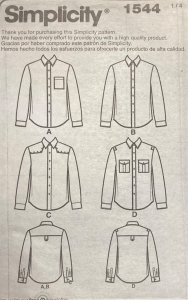
B. Pattern Pieces
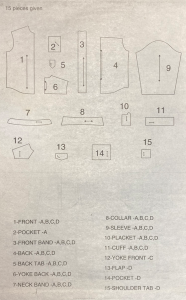
C. Symbols and Glossary of Terms
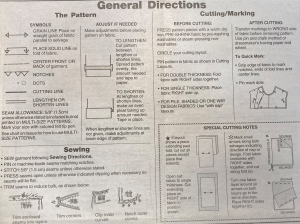
D. Cutting Layouts for Fabrics and Interfacing
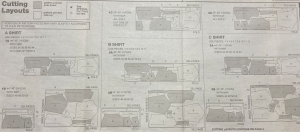
E. Sewing Instructions
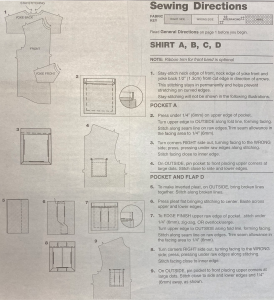
Hemming it Up
The best way to save yourself and your students money, time, and effort, is to thoroughly read the directions for the pattern from the first step to the last, noting the pictures and views embedded within the instruction sheet. Do not try to reinvent the wheel–follow the directions to ensure your success! This is a life skill needed in all areas of our lives and jobs in every field of study. Instill this in yourself and your students and you will be surprised at what you can accomplish.
Resources
| Resources | QR Codes |
| How to Read a Sewing Pattern | 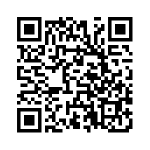 |
References
Apple, L. (2022). Introduction to Apparel Production Workbook. Uark.pressbooks.pub. Retrieved 20 September 2022, from https://uark.pressbooks.pub/introapparelproductionworkbook/.
Deaton, S. (2021). Teaching Apparel Production. Presentation.
Westfall, M. (2013). Successful sewing. The Goodheart-Willcox Company, Inc.

